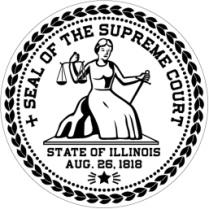Quick Take on Illinois Supreme Court Opinion Issued Thursday, Feb. 1
 The Illinois Supreme Court handed down an opinion today in People v. Chairez. At issue in this case was the constitutionality of a section of the unlawful use of a weapon statute that prohibits an individual from carrying or possessing a firearm within 1000 feet of a public park. Kerry Bryson of the Office of the State Appellate Defender reviews the court's ruling.
The Illinois Supreme Court handed down an opinion today in People v. Chairez. At issue in this case was the constitutionality of a section of the unlawful use of a weapon statute that prohibits an individual from carrying or possessing a firearm within 1000 feet of a public park. Kerry Bryson of the Office of the State Appellate Defender reviews the court's ruling.
Over the past several years, constitutional challenges to various provisions of the unlawful use of weapons (UUW) statute have made their way through the courts. Chairez involves another such challenge, specifically with regard to the provision prohibiting an individual from carrying or possessing a firearm within 1000 feet of a public park [720 ILCS 5/24-1 (a)(4), (c)(1.5)].
In 2013, Julio Chairez pled guilty to possessing a firearm within 1000 feet of a park in Aurora. Subsequently, Chairez filed a post-conviction petition arguing that the statute violated the second amendment and seeking to vacate his conviction. The circuit court agreed, and the case proceeded directly to the Illinois Supreme Court.
The court began its discussion by reminding circuit courts to clearly state the legal basis for any ruling that a statute is unconstitutional, pointing to Rule 18 and to previous cases where circuit court orders were deficient in that regard.
As to the question of constitutionality, the court declined to analyze this statutory provision under Burns, 2015 IL 117387. In Burns, the defendant’s prior felony conviction was used at sentencing to enhance a Class 4 aggravated unlawful use of weapon conviction to a Class 2 felony. The Class
4 version of AUUW had already been held unconstitutional under Aguilar, and the Court found that the defendant’s felony status was not an element of the offense but rather was a sentencing factor such that the underlying AUUW conviction remained unconstitutional.
Here, unlike Burns, the proximity to a public park is an element of the offense which must be proved to the trier of fact. The court concluded that the legislature intended the specific locations enumerated in (c)(1.5) to be separate offenses with separate penalties, not sentence enhancements, thus Burns did not control.
The court went on to analyze the statute in question without specifically deciding whether it involved conduct that fell beyond the protection of the second amendment because even presumptively lawful regulations under Heller must be subjected to some level of scrutiny (and that level must be greater than the rational basis test).
The court then applied intermediate scrutiny to the statute, beginning with a determination of “where on the sliding scale of intermediate scrutiny the law should be analyzed.” That analysis involves a determination of the breadth of the restriction and the severity of its burden on the second amendment. The court concluded that the 1000-foot restriction struck at the core of second amendment rights because it amounts to a complete ban on the possession of a weapon in a vast number of public areas across the state.
Likewise, the restriction affects “the gun rights of the entire law-abiding population of Illinois,” and is therefore a severe burden on the second amendment right of self-defense. These factors warranted application of “elevated intermediate scrutiny” under which the State must establish a close fit between the 1000-foot public park restriction and the public interests served by it.
The court rejected the State’s general reliance on school shooting data and increases in juvenile arrests for weapons offenses and murder with a firearm because it did not connect that date in any meaningful way to the parks restriction. The court also noted the wide range of public areas that would fall within 1000-feet of a park, and the lack of any notification where those 1000-foot restriction zones start and end. Because the State did not establish the required means-ends fit, the statute was facially unconstitutional.
Finally, the court found the provision in question severable from the remainder of the statute, including the other 1000-foot restriction areas within section (c)(1.5) (schools, courthouses, public transportation facilities, and public housing property). Whether those 1000-foot restrictions can withstand scrutiny will have to be resolved in another case.

